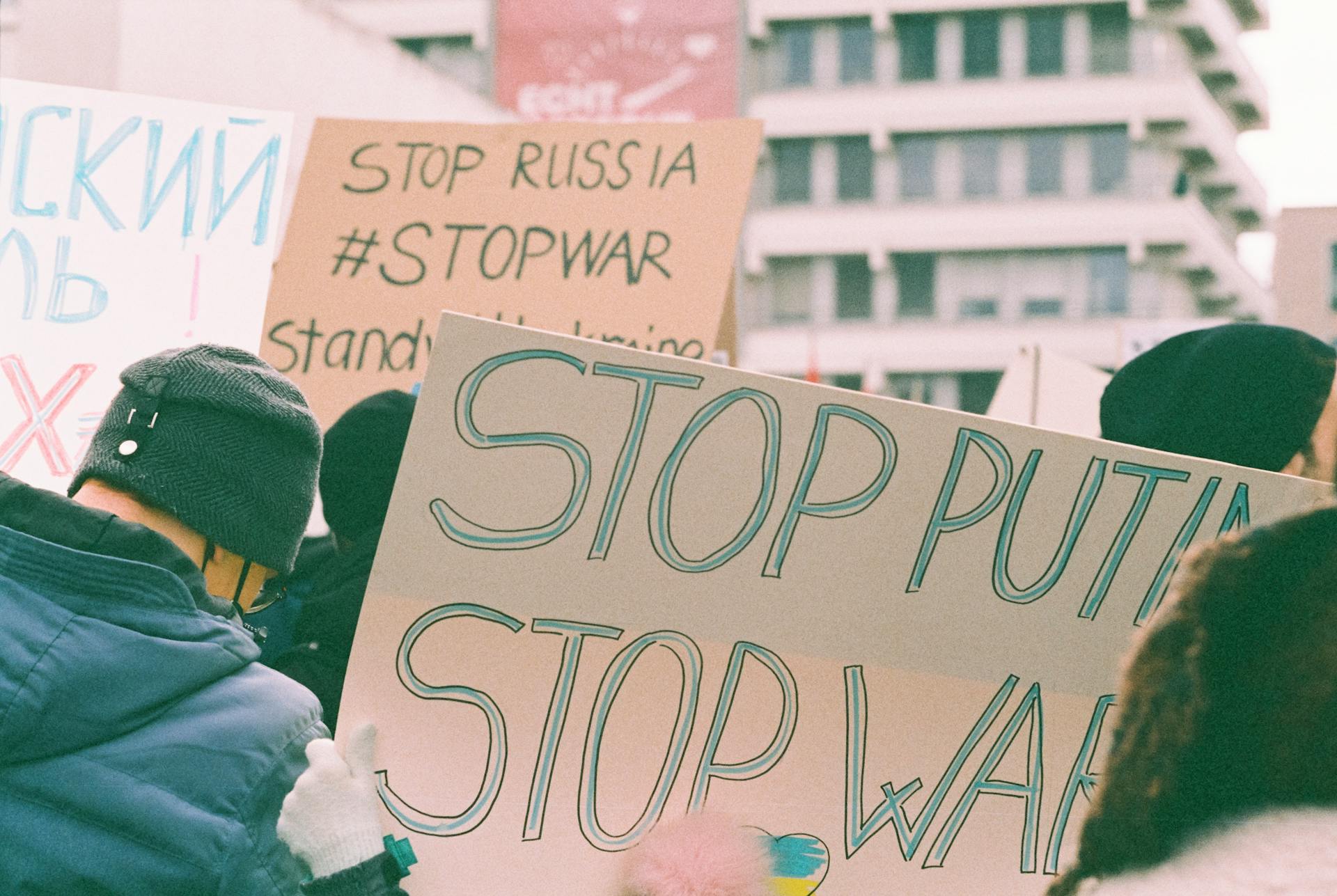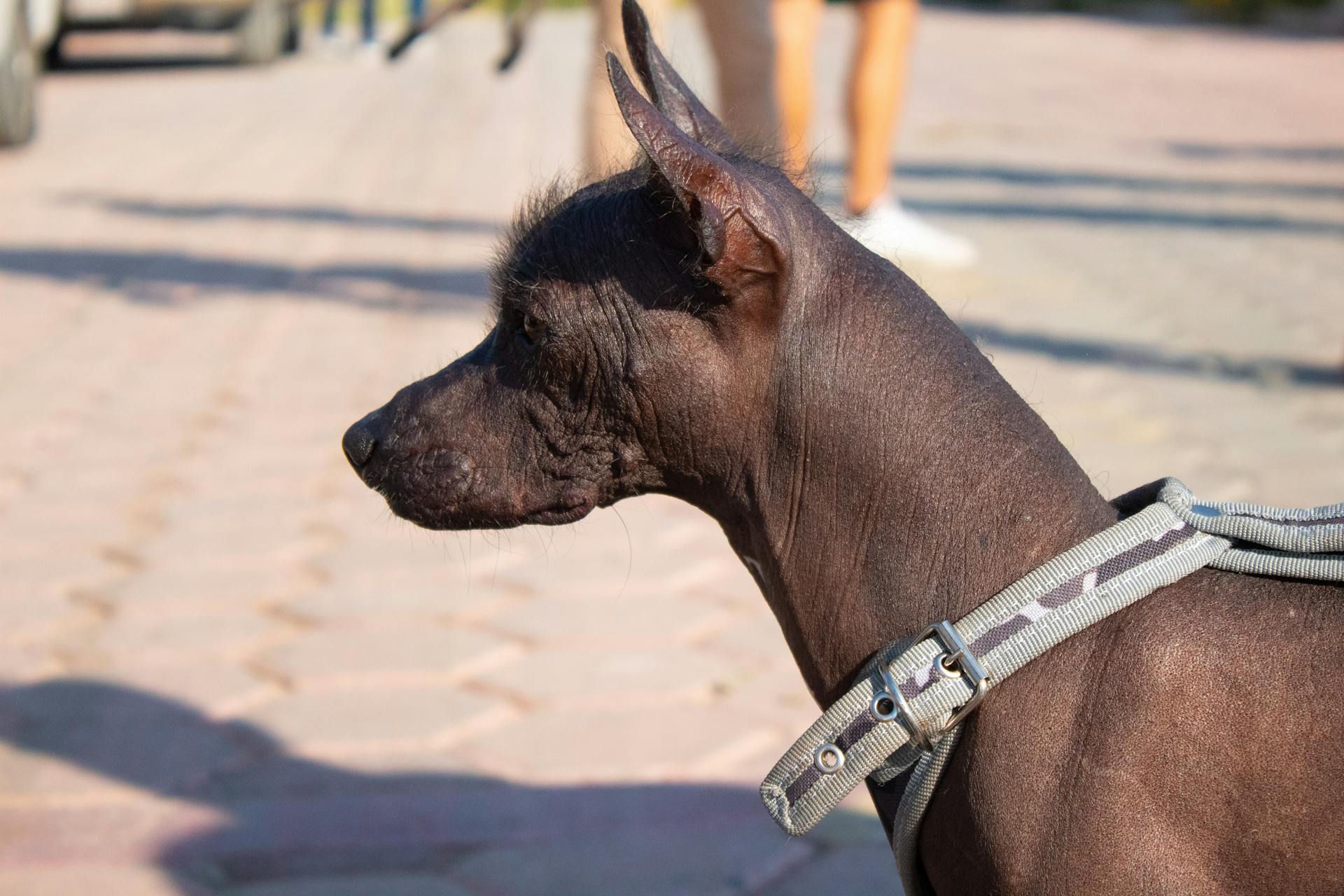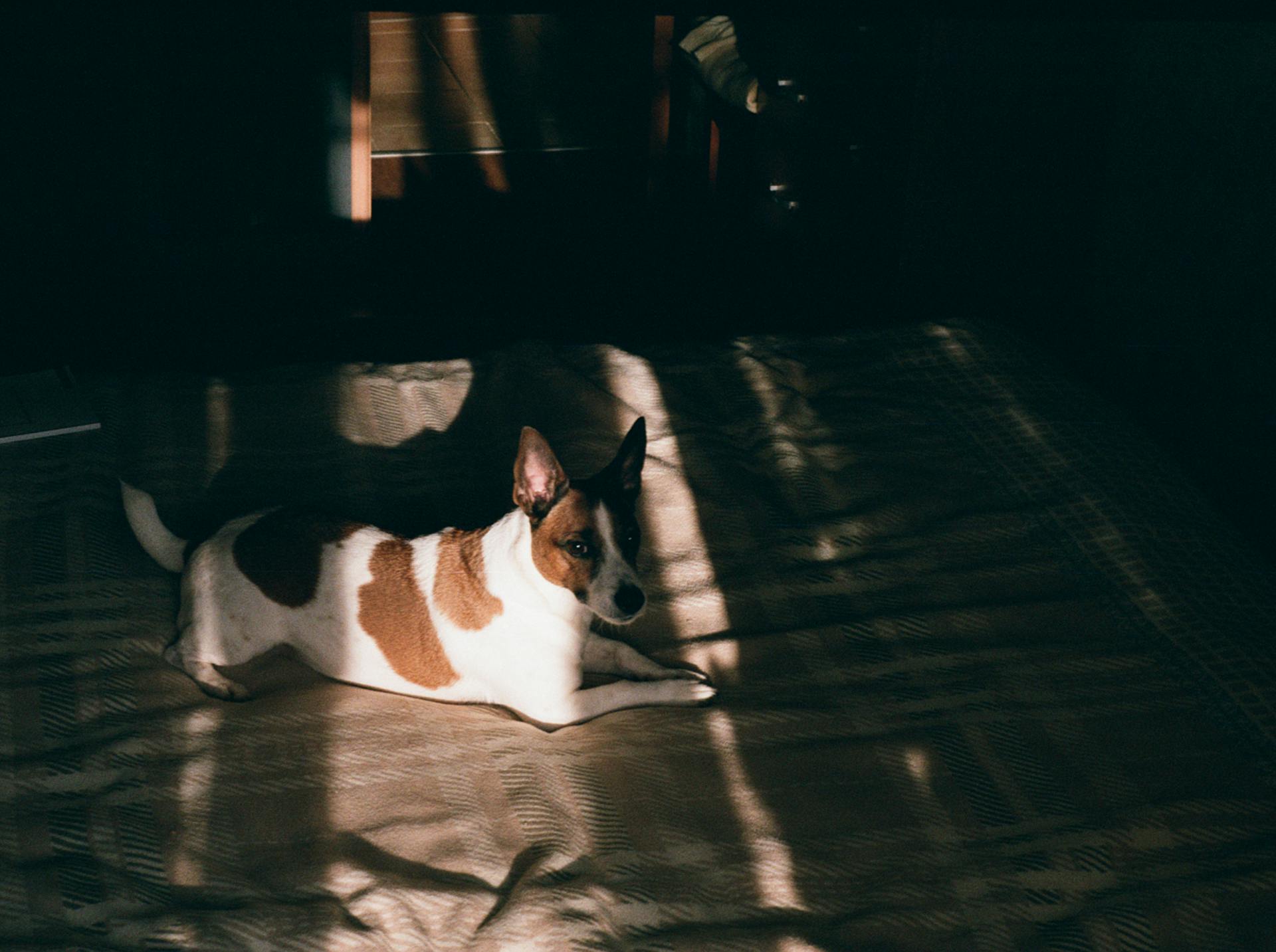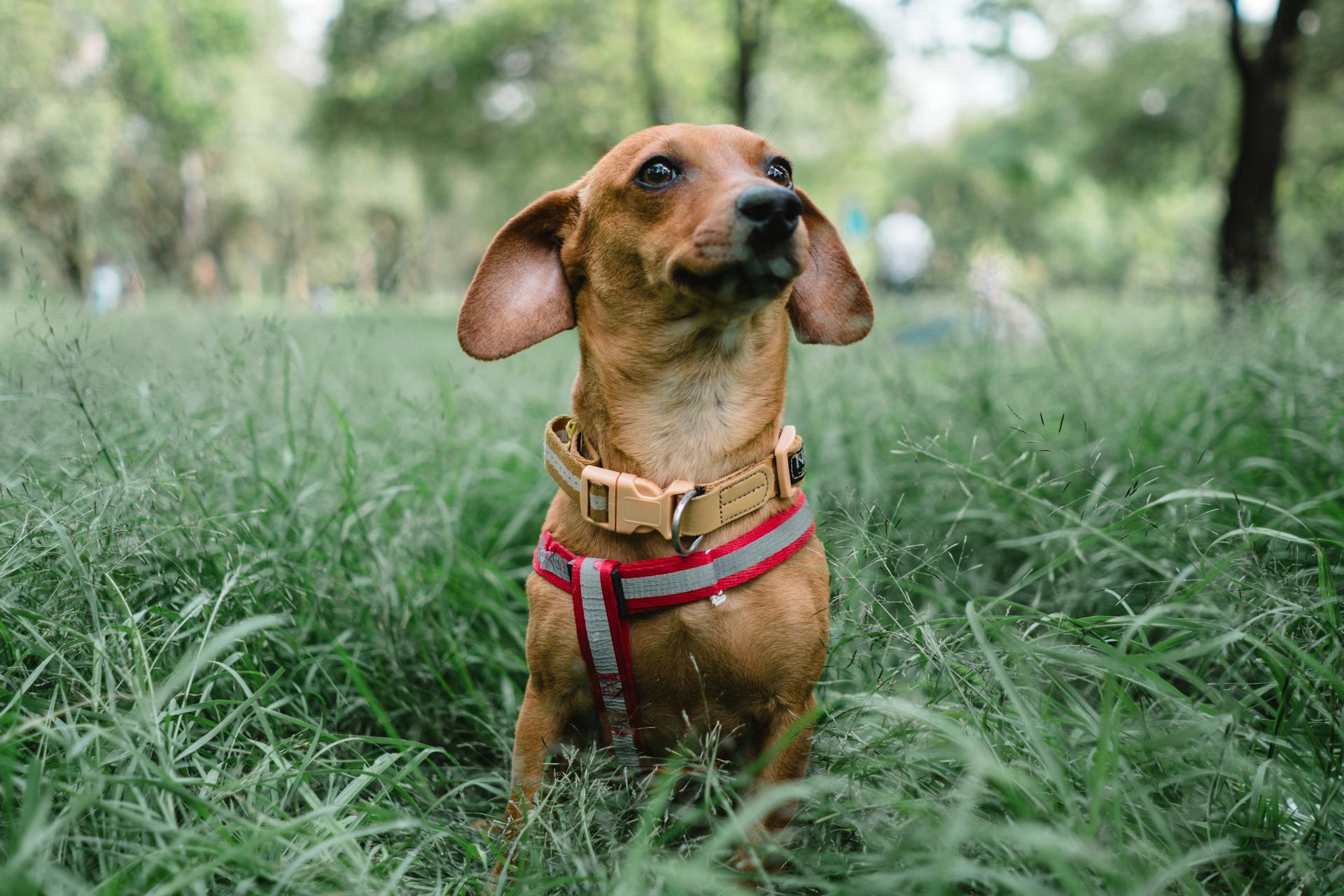
Dog play is a natural behavior for canines, but it can sometimes be misinterpreted as aggression. A dog's body language is a key indicator of whether they're playing or preparing to fight.
Dogs will often display a relaxed, open posture when playing, with their ears up and tail wagging. In contrast, an aggressive dog will have a tense, closed posture with ears back and tail held low.
Play-fighting is a way for dogs to practice social skills and exercise, and it's essential for their emotional and physical well-being.
Understanding Aggression
Aggression in dogs is a complex issue, but it's essential to recognize the signs. A high, stiff tail, panting, staring, flattened ears, exposed teeth, and sudden yawning are all indicators that your dog is feeling combative.
Some dogs are more prone to aggression than others, especially around strangers. If your dog tries to puff out their chest and make themselves look bigger, they could be perceiving the newcomer as a threat.
Stress is a common cause of dog aggression, and it can manifest in various forms. Territorial aggression occurs when a person or animal enters a dog's claimed space, while protective aggression stems from a dog feeling you or another family member is threatened.
Dogs may also exhibit possessive aggression, fear or defensive aggression, social aggression, frustration-elicited aggression, or pain-elicited aggression. Understanding the type of aggression your dog is experiencing is crucial in developing an effective treatment plan.
Here are some common forms of aggression:
- Territorial aggression: occurs when a person or animal enters a dog's claimed space
- Protective aggression: occurs when a dog feels you or another family member is threatened
- Possessive aggression: occurs when someone takes away a dog's resources, such as food or dog play toys
- Fear or defensive aggression: occurs when a dog feels cornered or trapped by another individual
- Social aggression: occurs when a dog feels obligated to protect their place in the social hierarchy
- Frustration-elicited aggression: occurs when a dog doesn't get what they want
- Pain-elicited aggression: occurs when a dog is injured
Treatment for aggression takes time and effort, but with proper management, improvement is seen in 96% of cases, with median improvement in aggression rated at 69%. Treatment involves avoiding aggressive situations and triggers, desensitization and counter-conditioning, and medication to reduce anxiety and aggression.
Discover more: Treatment for Dog Aggression
Preventing Aggression
Avoiding aggressive situations and triggers is crucial to preventing aggression in dogs. This can take time and effort, but with proper management, improvement is seen in 96% of cases.
Punishment should be avoided as it may escalate the aggression or redirect it toward the owner. Instead, focus on positive reinforcement techniques.
Spaying and neutering of intact dogs may also help reduce aggression. This is because intact dogs are more likely to engage in competition for resources, which can trigger aggression.
Exercise can have a calming effect, so taking the dogs for walks or runs may be recommended as part of a treatment plan. Consistency is key, so every human member of the household must be on the same page.
Isolating your dog from the object of their aggression can help them simmer down. This can be done by removing them from the situation and giving them a quiet space to calm down.
Use positive reinforcement to encourage good behavior. Reward your dog with a chew toy or treat after they calm down to reinforce the positive behavior.
See what others are reading: When to Put a Dog down for Aggression
Treatment and Training
Treatment for aggression takes time and effort, but with proper management, improvement is seen in 96% of cases, with median improvement in aggression rated at 69%.
To start, it's essential to avoid aggressive situations and triggers, and desensitization and counter-conditioning can be highly effective in reducing aggression.
Medication, such as fluoxetine, may be prescribed to reduce anxiety and aggression, but it's crucial to note that medication alone usually doesn't lead to successful resolution of aggression.
Spaying and neutering of intact dogs can also help reduce aggression, and exercise can have a calming effect, making walks or runs a great way to help your dog relax.
Consistency is key when it comes to treatment protocols, so make sure every human member of the household is on the same page and following the same routines and interactions with the dogs.
Desensitization and counter-conditioning involve gradually exposing dogs to each other in a controlled environment, starting with a safe distance and rewarding positive behavior with treats and praise.
This process should be done in short and frequent sessions, with the goal of decreasing the distance between dogs over time, and it's essential to remain calm and happy during these sessions to avoid escalating the situation.
For another approach, see: Does Fixing a Female Dog Help with Aggression
If your dog is showing aggressive behavior, it's best to isolate them from the object of their aggression and reward them with a calm and positive experience, rather than punishing them.
Positive reinforcement, such as rewarding your dog with a chew toy or treat after they calm down, can go a long way in helping them develop a more positive attitude and reducing aggression.
Working on obedience training with your dog can also be beneficial in reducing aggression, and if you're unsure of how to proceed, consider hiring a professional behavioral specialist who knows how to stop dog aggression.
Explore further: How to Calm Dog Aggression
Safety and Prevention
Safety is a top priority when it comes to managing dog aggression. Head collars with a trailing leash can be worn by both dogs to help prevent and intervene in fights.
Aversive citronella spray can be used to startle dogs apart without harming them during a fight. Basket muzzles can be considered, but all dogs in the household must wear them.
Dogs can eat, drink, and pant while wearing basket muzzles, making them a practical solution. Traditional muzzles that close the mouth should not be used in this situation.
If fighting is severe, it's best to completely separate the dogs until conditioning and other treatment protocols can be put in place. Re-homing may be necessary if the aggression poses a significant safety issue.
Dog Behavior: Fighting or Playing?
If your dog is engaged in a spirited game, it's easy to mistake their behavior for aggression. However, there are some key signs that indicate your pup is just having fun.
A wagging tail is a clear sign that your dog is happy and peaceful. Relaxed ears, soft eyes and mouth, and frequent blinking are also indicators of a playful mood.
Some dogs may playfully "bow" to their counterpart, lowering their front paws as a way of saying, "Let's have some fun!" Your pooch may also roll on their back when they're feeling playful, as an exposed belly often signals an invitation to start a game like chase.
You might enjoy: Playful Dog Names
Growling during play is typically used as a greeting, and as long as both playmates are relaxed, this behavior is completely normal.
If your dog appears to get a little too excited, you may need to give them a break from playtime. Roughhousing that keeps getting more intense could lead to injury, so get them away from the play area when barking and physical contact start to get out of hand.
Here are some key signs to look out for to determine whether your dog is playing or fighting:
- Wagging tail
- Relaxed ears
- Soft eyes and mouth
- Frequent blinking
- Big grin
- Playful bowing or rolling on their back
Sources
- https://www.tlcvetelpaso.com/blog/1010-aggression-between-family-dogs
- https://inquisitivecanine.com/2008/10/18/dog-play-behavior-are-they-fighting-or-playing/
- https://www.nylabone.com/dog101/dog-aggression-vs-playing
- https://www.dogtopia.com/blog/tell-difference-dog-play-aggression/
- https://bestfriendsvet.com/library/puppy-play-or-aggression/
Featured Images: pexels.com


